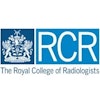
NEW YORK (Reuters Health), May 1 - The benefits of selective embolization of pulmonary arteriovenous malformations (PAVM) are usually maintained over many years, as demonstrated by helical computed tomography follow-up, investigators in France report.
Large PAVMs often cause right-to-left shunts, leaving the patient with symptoms such as dyspnea, fatigue, and cyanosis, and increased risk of stroke or cerebral aneurysm, Dr. Martine Remy-Jardin and associates note. While transcatheter embolotherapy is the first-line treatment of PAVMs, the current study, reported in the May issue of Radiology, has the longest follow-up of this treatment to date.
Dr. Remy-Jardin's team, at the University Center of Lille, retrospectively evaluated outcomes for 38 patients with a total of 64 PAVMs with feeding arteries of 3 mm or greater. Pulmonary arterial circulation was occluded by depositing steel coils (Cook, Bloomington, IN) in the feeding arteries.
The authors report that all treated PAVMs were initially successfully occluded (84% in one session and 16% in two sessions), as demonstrated by the cessation of aneurysmal perfusion. A mean of 3.92 coils were required for the simple PAVMs and 7.09 for the complex malformations.
After a mean follow-up of 9.74 years, the success rate as determined by helical CT was 75% (complete occlusion in 47% of cases; partial success, with diminution of the aneurysmal sac and feeding arteries less than 3 mm in diameter, 28%).
Causes of failure included recanalization of occluded feeding arteries in 10 cases, previously unrecognized additional feeding arteries of complex PAVMs in three cases, and development of systemic perfusion of the aneurysmal sac in one case. Repeat occlusion was performed for delayed recanalization in 12 cases.
The only factors linked to embolotherapy failure were pulmonary hypertension and gastrointestinal and/or hepatic shunts. Other potential risk factors -- anatomic characteristics of PAVMs; the mean number of coils required to obstruct the malformation, regardless of the size of the feeding arteries; age; gender; or hereditary hemorrhagic telangiectasia -- did not appear to affect outcomes.
Last Updated: 2006-04-28 16:37:30 -0400 (Reuters Health)
Radiology 2006;239:576-585.
Related Reading
Complex cardiothoracic surgery benefits from 3D imaging, June 13, 2005
Copyright © 2006 Reuters Limited. All rights reserved. Republication or redistribution of Reuters content, including by framing or similar means, is expressly prohibited without the prior written consent of Reuters. Reuters shall not be liable for any errors or delays in the content, or for any actions taken in reliance thereon. Reuters and the Reuters sphere logo are registered trademarks and trademarks of the Reuters group of companies around the world.


















